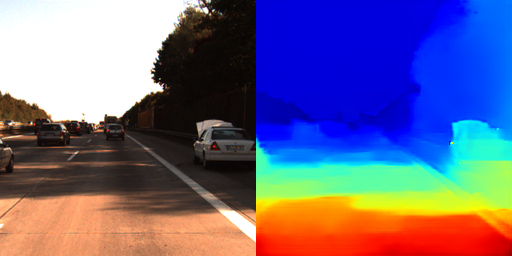A PyTorch implementation of the Pix2Pix architecture for image-to-image translation, tailored for depth estimation from dashboard camera images. The model consists of a U-Net-based generator that learns a mapping from RGB input images to their corresponding depth maps, and a PatchGAN discriminator that enforces local realism by evaluating image patches rather than the entire image. The system is trained using a combination of adversarial loss (to encourage realistic outputs) and L1 loss (to ensure pixel-wise similarity to the ground truth). Input-target image pairs are extracted from composite images where the input RGB image is on the right half and the target depth/thermal image is on the left.
- Generator: U-Net architecture with skip connections
- Discriminator: PatchGAN discriminator for realistic image generation
- Loss: Combined adversarial loss and L1 loss for better pixel-wise accuracy
Pix2Pix/
├── data/
│ ├── loader.py # Data loading utilities
│ └── __init__.py
├── model/
│ ├── generator.py # U-Net Generator
│ ├── discriminator.py # PatchGAN Discriminator
│ └── __init__.py
├── train/
│ └── train.py # Training script
├── inference/
│ └── test.py # Inference script
├── output/ # Generated results
└── data.py # Data preprocessing
- PyTorch
- NumPy
- OpenCV
- Matplotlib
- imageio
python train/train.pypython inference/test.pyThe model generates depth maps from dashboard camera images. Here are some example results:
| Input → Output |
|---|
 |
 |
 |
The model is trained on the pix2pix-depth dataset containing paired RGB and depth images from dashboard cameras.
Dataset used: https://www.kaggle.com/datasets/greg115/pix2pix-depth
This project is licensed under the Apache License - see the LICENSE file for details.